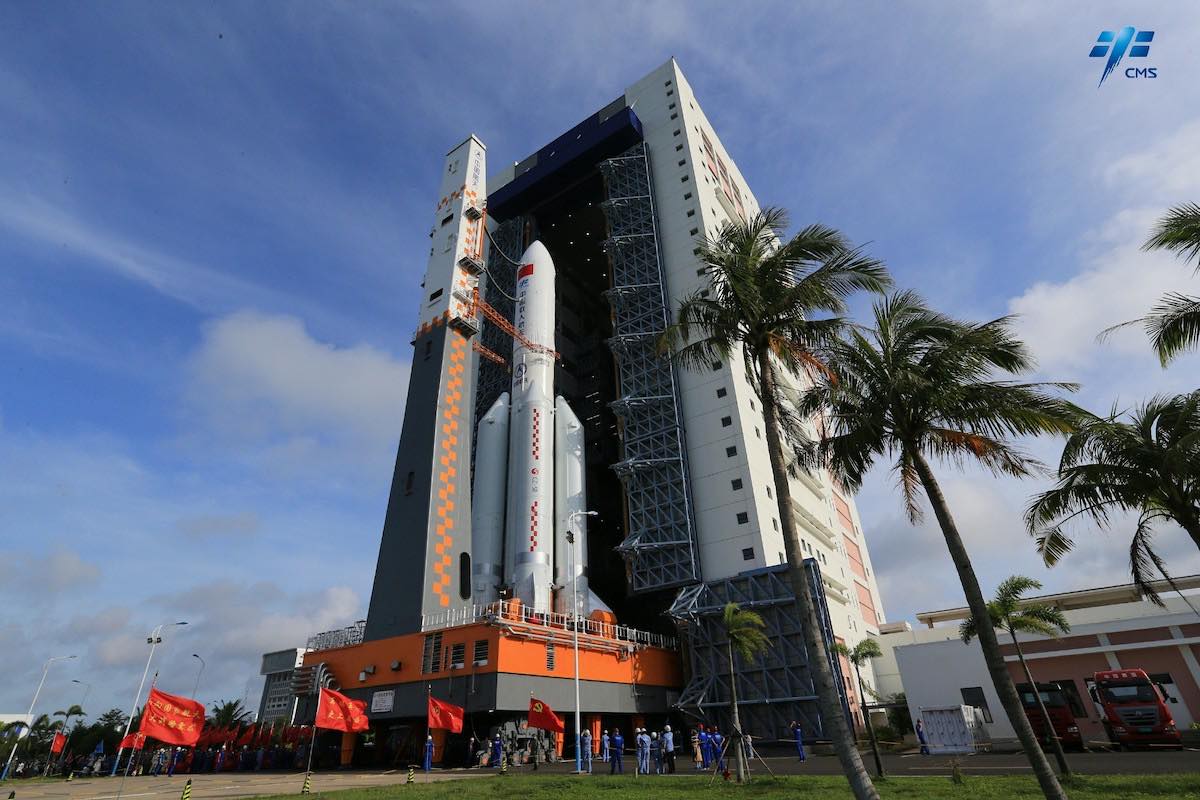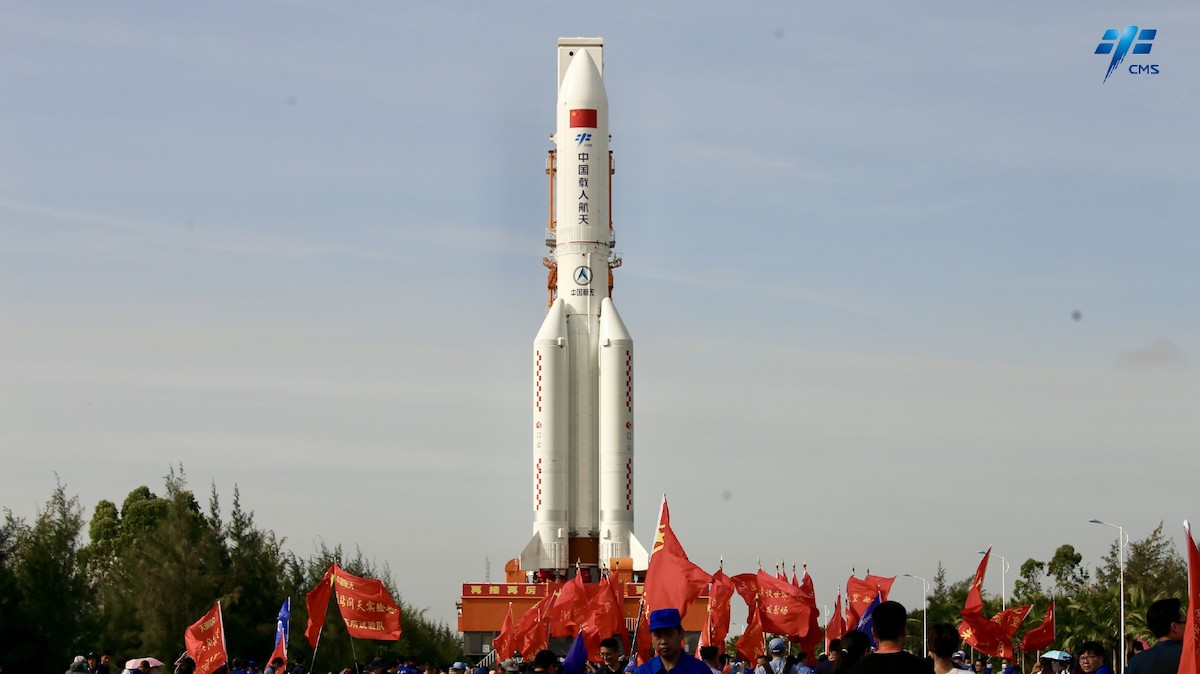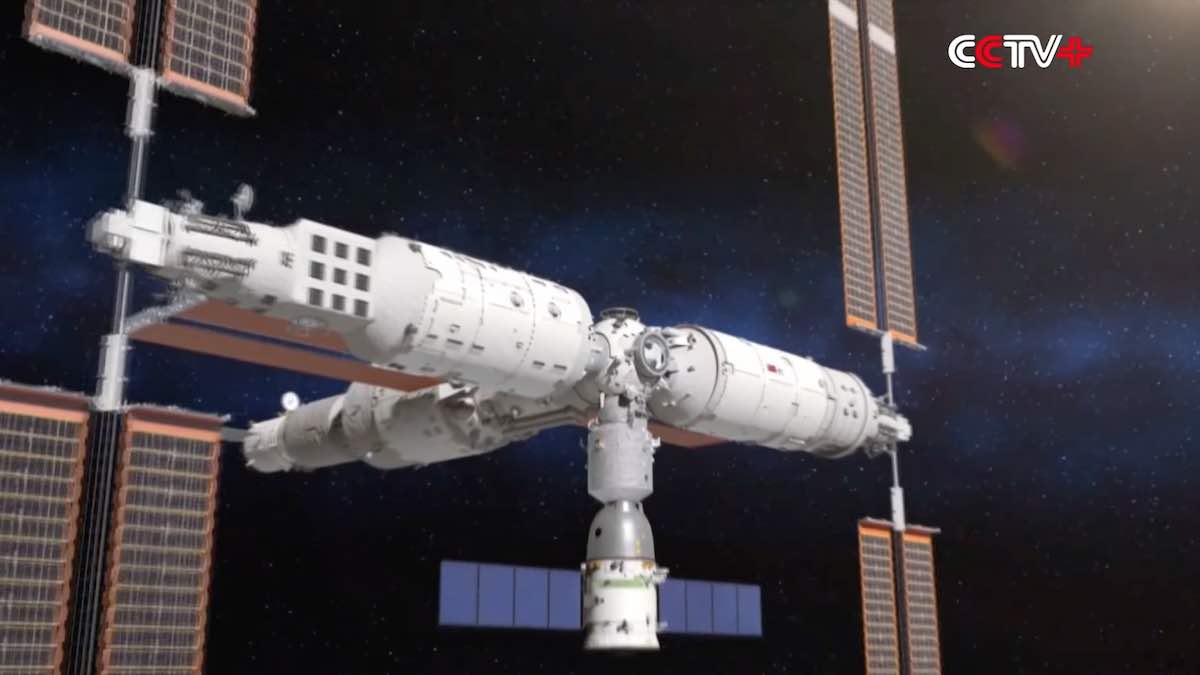You are using an out of date browser. It may not display this or other websites correctly.
You should upgrade or use an alternative browser.
You should upgrade or use an alternative browser.
China's Answer to the Aging International Space Station: The Tech Behind Tiangong
- Thread starter xizhimen
- Start date
The blocking of China in international scientific and technological cooperations started decades ago. Russia really shouldn't have worked with the west to block China from the international space station project, now they learned the hard way who are the real friends and enemies.
China has a good track record of beating western technology blocades and turning their blocades into strong will of national inspirations. Now the west is trying to block China's chip industries and we'll see China lead the pack in this sector in a decade.
China prepares to launch Wentian lab module
Jul 18, 2022 The Long March-5B Y3 rocket, which will carry the Wentian lab module to China's under-construction space station in orbit, has been vertically transported to the launchpad at the Wenchang Spacecraft Launch Site in south China's Hainan Province on Monday. According to China Manned Space Agency, the Wentian lab module will be launched in the near future at an appropriate time.
China’s heavy-lift Long March 5B rocket rolls out with new space station module
July 18, 2022 Stephen Clark
China moved a heavy-lift Long March 5B rocket to its launch pad Monday in preparation for liftoff this weekend with a 22-ton module for the country’s Tiangong space station, a mission that could end with another uncontrolled re-entry of the Long March 5B’s large core stage.
The powerful launcher rolled from its assembly building to the launch pad Monday at the Wenchang launch center on Hainan Island in southern China. The Wentian module for China’s space station is encapsulated inside the rocket’s payload fairing.
The Long March 5B rocket is set for launch around 2:20 a.m. EDT (0620 GMT) Sunday, July 24, according to airspace warning notices associated with the mission. That’s also the approximate time the Tiangong space station’s orbital plane passes over the Wenchang launch center.
The Wentian module, with a launch weight near 44,000 pounds (20 metric tons), will dock with the Tianhe core module on China’s Tiangong station in low Earth orbit. Chinese astronauts Chen Dong, Liu Yang, and Cai Xuzhe living on the Tiangong complex will monitor Wentian’s arrival, then become the first crew members to float into the station’s new module.
The launch this weekend will add the second of three large pressurized modules needed to complete the initial construction of the Tiangong space station. The Tianhe core module launched on a Long March 5B rocket in April 2021, and Chinese ground teams are preparing the Mengtian module for launch on a Long March 5B rocket in October.
The Wentian module carries a small robotic arm designed for more precise movements than the larger arm positioned outside the Tianhe core module. The Wentian module will primarily host life science and biological experiments, Chinese officials said.

The Wentian module will initially dock with an axial port on the Tianhe module, a docking mechanism that was recently cleared by the departure of a no-longer-needed Tianzhou cargo ship. Tianhe’s mechanical arm will move the module to its final position on the side of the space station’s core section.
The Mengtian module scheduled for launch later this year will arrive at the Tiangong space station in a similar way. Once Wentian and Mengtian are in their final positions, the Chinese station will have a distinctive “T” shape with its three main pressurized elements.
With the Long March 5B on the launch pad to send the Wentian module into orbit, Chinese teams at Wenchang will complete final pre-flight checkouts and testing before loading kerosene, liquid hydrogen, and liquid oxygen propellants into the rocket in the final hours before launch Sunday.
Ten engines will ignite to push the 176-foot-tall (53.7-meter) Long March 5B rocket into the sky with 2.4 million pounds of thrust.
The Long March 5B rocket is a variant of the Long March 5, China’s most powerful launcher, that flies without the upper stage required to place payloads into high-altitude orbits or to send spacecraft to the moon or Mars. On the Long March 5B, the upper stage is replaced with an expanded payload volume to accommodate large modules for China’s space station.
That means the Long March 5B rocket can reach a low-altitude orbit using four kerosene-fueled strap-on boosters and a hydrogen-fed core stage. On the two previous Long March 5B flights, including the Tianhe core module launch last year, the core stage remained in a low orbit after deploying its payloads.
The core stages on the previous Long March 5B missions re-entered the atmosphere about one-to-two weeks after launch. The Long March 5B’s core stage measures about 100 feet (30 meters) long and has an empty mass of about 23.8 tons (21.6 metric tons), making it one of the largest and most massive human-made objects to ever re-enter the atmosphere in an uncontrolled manner.
After the most recent Long March 5B launch and re-entry last year, NASA Administrator Bill Nelson said China was “failing to meet responsible standards regarding their space debris.”
“Spacefaring nations must minimize the risks to people and property on Earth of re-entries of space objects and maximize transparency regarding those operations,” Nelson said in a statement last year.
Wang Wenbin, a spokesperson for the Chinese Foreign Ministry, said in a press conference last year that it is “common practice” for upper stages of rockets to burn up while re-entering the atmosphere. He incorrectly referred to the Long March 5B rocket body as an upper stage, and said that “most of its parts will burn up upon re-entry, making the likelihood of damage to aviation or ground facilities and activities extremely low.”
But no other launcher in the world leaves such a massive component in orbit to fall back to Earth. Dead satellites and old rocket stages regularly re-enter the atmosphere, but re-entering objects with masses of more than a few tons are rare.

Larger booster and core stages used on other rockets typically fall back to Earth without reaching orbit, usually in areas downrange from the launch site that are clear of people.
Like most space junk that comes back into the atmosphere, much of the Long March 5B rocket burns up as temperatures reach thousands of degrees during re-entry. But some debris could reach Earth’s surface intact.
The risk of any of the rocket debris harming someone or damaging property is low, with objects most likely to fall into the ocean or in unpopulated areas. But the uncontrolled re-entry of the first Long March 5B core stage in 2020 spread debris over the Ivory Coast. The Long March 5B re-entry last year occurred over the Indian Ocean.
Without any design changes, the Long March 5B rockets used for launches of the Wentian module Sunday and the Mengtian module in October will meet a similar fate with an unguided re-entry. Airspace warning messages released to pilots for the Wentian launch this weekend do not show any re-entry zone for the core stage, suggesting it will remain in orbit for an uncontrolled descent in the days or weeks after launch.
The Chinese space station orbits about 236 miles (380 kilometers) above Earth, at an inclination of 41.5 degrees to the equator. The orbit means the spent Long March 5B core stage could come down anywhere between 41.5 degrees north and south latitude.
Long March-5B Carrier Rocket Offers Greater Lift Capacity: Engineers
Jul 19, 2022 The Long March-5B rocket to carry into orbit China's space station lab module Wentian in the near future is known for its world's unique "a-stage-and-a-half" launch architecture and greater lift capacity, has effectively improved the launch reliability, said engineers of the rocket.The average age of Chinese space research teams is 35, amazingly young.

